Bow Before Blackness: Non-Stop Black in Brave New Britain
Chuck the Cuck is at it again. Our so-called king Charles III, who lives in luxurious palaces built by Whites and enjoys a millionaire’s life funded by Whites, has once again spurned Whites and sanctified Blacks. The staunchly republican and anti-monarchist Guardian approvingly reported how Chuck has “hailed the pioneers of the Windrush generation.” Seventy-five years ago a ship called the Empire Windrush brought one of the first batches of Caribbean Blacks to Britain. They were unwanted, unneeded, and would prove disastrous for Britain, but what does that matter to Chuck the Cuck? Those Blacks were “indomitable,” he has said, and it was vital for Britain to recognize their “remarkable legacy” and to “celebrate the immeasurable difference that they, their children and their grandchildren have made to this country.”
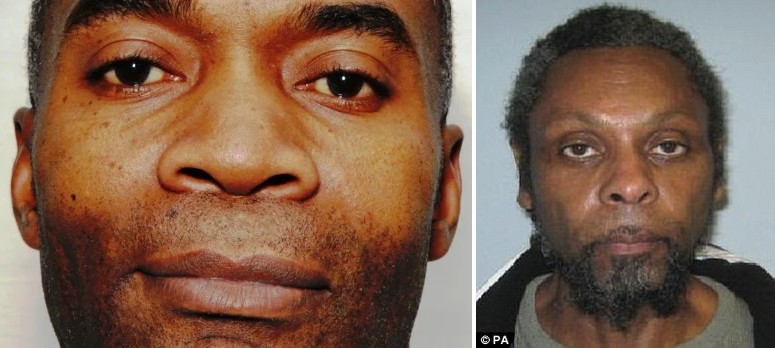
Indomitable Windrush pioneers: the gerontophile mass-rapist Delroy Grant and rapist-murderer Leroy Campbell
Chuck’s sycophancy was so extreme and his rhetoric so far removed from reality that you could almost suspect him of satire or sarcasm. But no, he was being absolutely sincere about the “Windrush generation,” which is the smarmy name recently devised by leftists for the low-IQ Caribbean Blacks who began enriching Britain with murder, rape, robbery, educational failure, incompetence, welfare-dependency, and anti-social behavior from the late 1940s. Chuck’s son and heir Prince William was also being sincere when he said that “we are forever grateful” to the Windrush generation for making the British “a better people.”
Well, I don’t know whether Chuck will live long enough to be put on trial for treason, but I think William will. One of the questions I’d like to see William asked when he is put in the dock is this: “Who is Delroy Grant, what were his remarkable achievements, and where did he come from?” If William doesn’t have an answer — and he very probably won’t — the prosecuting counsel can tell him that Delroy Grant is a prolific Black sex-criminal who specialized in raping and robbing elderly White women and that he came to Britain from Jamaica in the early 1970s.
Horrible crimes committed by Caribbean Blacks
In other words, Grant is a member of the saintly Windrush generation. After he learns about Grant’s contributions to Britain, William can be asked how he would have felt if his own elderly White grandmother, Queen Elizabeth the Evil, had been one of Grant’s scores or even hundreds of victims and whether he would still have felt “forever grateful” that the Windrush generation had changed Britain for the “better.”
But that won’t be the end of the questions for William and other traitors about the “remarkable legacy” of the Windrush generation. There is an embarras de choix when it comes to horrible crimes committed by Caribbean Blacks against British Whites who would otherwise have lived long and peaceful lives. For example, I’d also like to see William asked to imagine how he would have felt if his mother or wife had taken the place of the White nurse Lisa Skidmore, who was raped and murdered by another member of the Windrush generation, Leroy Campbell, in 2017. And how would William have felt if his daughter had taken the place of Mary-Ann Leneghan, the 15-year-old White schoolgirl who was tortured and raped by a Black gang for hours in 2005, before having her throat cut as she pleaded desperately for her life.
The leader of that Black gang was the son of a probable Windrush “pioneer” called Tony Thomas, who later pretended to the BBC that he was sorry about being a “fringe father” and abandoning his son and other illegitimate children. All of them were brought up at the expense of British Whites, like the many thousands of other illegitimate children fathered and abandoned by Blacks in Britain. How does Prince William feel about that huge expense and about the vastly disproportionate number of violent and acquisitive crimes committed by Blacks here? I suspect he won’t have good answers for any of those questions. Like his father, he is as unremarkable for his intellect as he is remarkable for his treachery. But who needs intellect when it comes to understanding the true nature of Blacks? It is very easy to prove that the Windrush generation and its descendants have been a curse on Britain, not a blessing.
Kings of the curse
It’s also easy to prove that Jews have been central to the imposition of that curse on Britain. After mass migration from the Caribbean began, a predatory Jewish landlord Peter Rachman (1919-62) made big profits in London by renting bad housing at high prices to Blacks who were unpopular as tenants because of their criminality, noise, and anti-social behavior. Indeed, Rachman used violent and noisy Blacks to drive White tenants out of houses he wanted to buy or convert into flats. Decades after Rachman’s heyday, another money-hungry Jew, Alex Langsam, is making more big profits from more non-White invaders. Langsam, who has been nicknamed the “Asylum King,” owns the sardonically named Britannia Hotels, which was “the worst hotel chain for ten years running, according to a survey conducted by consumer group Which” and which rakes in millions from government contracts for housing so-called “asylum seekers” from the corrupt, diseased, and violent Third World.
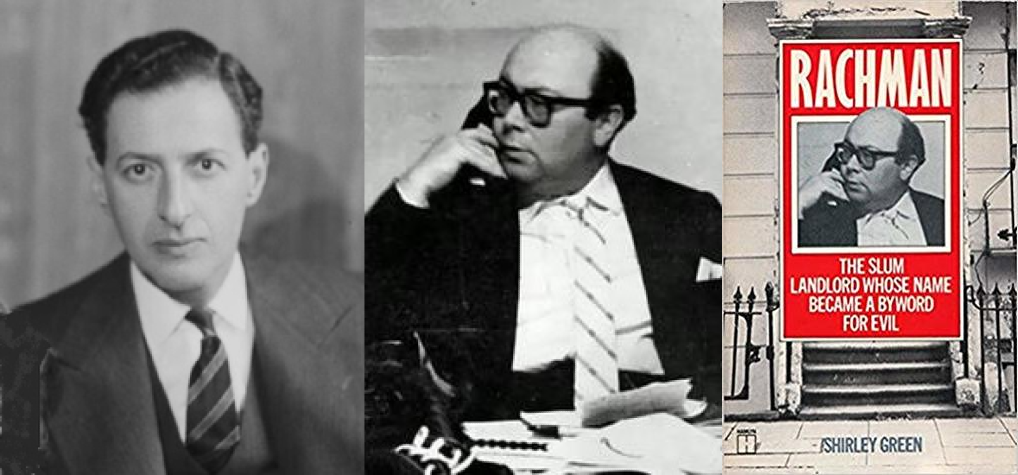
Two Jews who used Blacks against Whites: Cyril Salmon and Peter Rachman
Langsam’s father was a refugee from the Nazis and Langsam has said: “My father was the most nationalistic person I have ever come across. Britain saved his life and gave him a living and he instilled that in me. I am grateful for what this country has given me.” I bet he is: according to the Daily Mail, he is being given £100,000 a day for housing the next generation of Third-World criminals and tax-eaters. That’s Jewish “nationalism” in Britain; in Israel, Jewish nationalism takes the entirely opposite form of building high-tech fences to keep Third-World enrichers out. As Jews are well aware, Blacks are a curse on any Western nation that accepts them as residents. But that’s precisely why Jews are so determined to keep Blacks out of Israel and keep them flooding into America and Europe. Blacks are the most harmful, unintelligent, and unproductive of all groups. That is, they are the group that least resembles Whites and is most suitable for destroying White civilization.
Better for Blacks, worse for Whites
As a first step towards that tantalizing goal, the hostile Jewish elite worked to transform Blacks into the archetypal saintly victims of White oppression. Kevin MacDonald has documented how the National Association for the Advancement of Colored People (NAACP) in America was organized and funded not by Blacks, but by Jews. In Britain, the Jewish lawyer Anthony Lester (1936-2020) boasted of how he used the tactics of his fellow Jews in America to begin taking freedom of speech and association away from Whites in Britain too:
In Search of Something Better: Anthony Lester recalls the creation of the Commission for Racial Equality
In 1964, on my return from witnessing the “Long Hot Summer” of civil rights action in the American South, I helped found CARD (the Campaign Against Racial Discrimination). We campaigned for effective legislation to combat racism in Britain. The first measure — the Race Relations Act 1965 — was hopelessly narrow and lacked teeth, so we fought for something better. When CARD was taken over by militant extremists, in December 1967, Jim Rose [another Jewish lawyer] and I founded the Runnymede Trust to combat racial prejudice and promote policies for overcoming racial discrimination and disadvantage. Labour’s second measure, the Race Relations Act 1968, was broader in scope but still lacked teeth. So again we campaigned for something better. (Catalyst magazine, 20th November 2006)
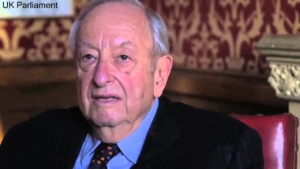
Anthony Lester, Baron of Bullshit, resigned from the House of Lords because of a sex scandal.
By “something better,” Lester meant “better for Blacks, worse for Whites.” He was praised in his Guardian obituary as “the author of the ground-breaking legislation on racial and gender equality introduced in Britain by Harold Wilson’s Labour government in the 1970s.” The “ground” he was “breaking” was British identity and nationhood. Jews are highly adept at using the mechanisms of White civilization — law, politics, academia, publishing, electronic media — to undermine White civilization. Another Jewish lawyer helped the “Windrush generation” by imposing harsh sentences on Whites who fought back after their unwanted arrival. It’s no coincidence that Whites arrested during the so-called Notting Hill race-riots in 1958 found themselves up before a Jewish judge called Cyril Salmon (1903-99), who sent them off to years in jail for resisting the invasion of their homeland by low-IQ Black criminals and tax-eaters. Salmon was later made into a Baron, rising even higher in the hostile elite that imposed non-White migration on unwilling British Whites.
Stone Cold Cultist
Dr Richard Stone (born 1937) hasn’t risen that high, but he was awarded an OBE (Order of the British Empire) in 2010 for his tireless anti-White agitation and propaganda on behalf of non-Whites. And who is Richard Stone? He’s another Jew who has exploited the Windrush generation to demonize and dispossess British Whites. Stone is a high priest in the martyr-cult of Stephen Lawrence, the Black who was one of hundreds of young Black men to have been stabbed to death in London. Unlike all the others, Stephen Lawrence has been elevated to sainthood and endlessly commemorated because his killers were highly unusual. As in America, the vast majority of Black murder-victims in Britain are killed by other Blacks. But not the killers of Stephen Lawrence: against all the odds, they were White. So their crime has been used to promote the leftist lie that Blacks are the virtuous victims of White villainy.
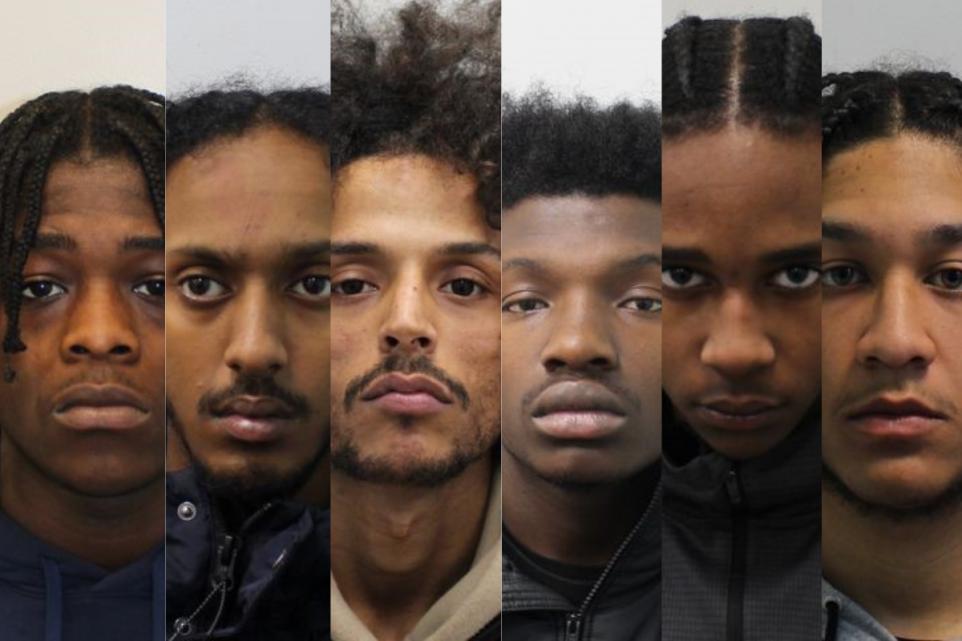 More Blacks, more crime against Whites: a gang of violent Black robbers in 2023
More Blacks, more crime against Whites: a gang of violent Black robbers in 2023
Richard Stone has been central to the martyr-cult of Stephen Lawrence and to the promotion of that lie. He hasn’t been raised to the peerage yet, but his good friend Doreen Lawrence has. She is the martyr’s mother, a member of the Windrush generation who was sent to the House of Lords by the part-Jewish, so-called “Conservative” prime minister David Cameron in 2013. She has endlessly lectured the White British on the failings of their police and legal system. In one way, her lectures are very funny, because Dame Lawrence comes from the extremely violent, corrupt, and badly run Black nation of Jamaica, which has a far smaller population than Britain but more officially recognized murders every year. Many other murders are not officially recognized in Jamaica because they are committed by the Jamaican police in extra-judicial executions of suspected criminals.
Black saints in anti-White martyr-cults
In another way, Dame Lawrence’s lectures are not funny at all. They’re Satanic, because they represent an inversion of the truth and a deliberate, malicious attempt to replace White civilization with Black barbarism. I don’t think the stupid and self-righteous Doreen Lawrence fully understands what she is doing, but clever and cunning Jews like Richard Stone certainly do. You can find other clever and cunning Jews in America working in the even more pernicious martyr-cult of St George Floyd. He is America’s Stephen Lawrence and is even more appealing to leftists because, unlike Stephen Lawrence, he wasn’t an innocent victim. Instead, he was a thug and drug-addict whose criminality was directly responsible for his own death. His martyr-cult is therefore an even more outrageous inversion of truth than the martyr-cult of Stephen Lawrence. What’s not to like for leftists?
 George Floyd and Stephen Lawrence, Black saints in anti-White martyr-cults
George Floyd and Stephen Lawrence, Black saints in anti-White martyr-cults

“Bow before Blackness, Britain!”: A log-in page at the Black Bullshit Corporation (BBC)
The acronym BBC is supposed to stand for “British Broadcasting Corporation,” but people suggested decades ago that “Bolshevik Broadcasting Corporation” was much closer to the truth. They were right, but nowadays you can also say that BBC stands for “Black Bullshit Corporation.” Like Britain’s advertising industry, the BBC operates a policy of what I call Non-Stop Negro, constantly broadcasting Black faces and Black voices to the nation and the world. It also worships tirelessly in the martyr-cult of Stephen Lawrence, proclaiming the virtue of Blacks and the villainy of Whites, inciting Blacks to feel resentment and urging Whites to feel guilt.
They don’t love Blacks: they hate Whites
That has deadly consequences both for the Whites against whom Blacks take daily revenge and for Blacks themselves, because the martyr-cult of Stephen Lawrence, just like the martyr-cult of George Floyd, has discouraged the police from enforcing the law against Blacks. As the rule of law retreats, Black barbarism advances and more Blacks are murdered by other Blacks. In other words, the loudly expressed concern of leftists for Black welfare is bogus. Leftists are not motivated by love of Blacks, but by hatred of Whites. They don’t care that, thanks to their anti-police activism, thousands more young Black men are being killed and wounded by other Blacks in Britain and America. Their aim is not to help Blacks, but to end the rule of law, destroy the West, and rule the ruins. The so-called Windrush generation was a curse on Britain, which is precisely why Jews like Richard Stone and traitors like Chuck the Cuck pretend that it was a blessing.
By their inversions shall ye know them: Richard Stone and Chuck the Cuck are on the side of evil and lies. The stock of both has been vastly increased by the Windrush generation, which has supplied Britain with an endless stream of Black criminals preying on Whites and Black activists preaching against Whites. Like all other Blacks, the gerontophile rapist Delroy Grant and the rapist-murderer Leroy Campbell should never have been allowed to become residents of Britain. You won’t hear those names mentioned by the BBC, but one day I hope to see the traitors who work there stand in the dock next to Prince William, answering for their bullshit about Blacks and their crimes against Whites and the West.

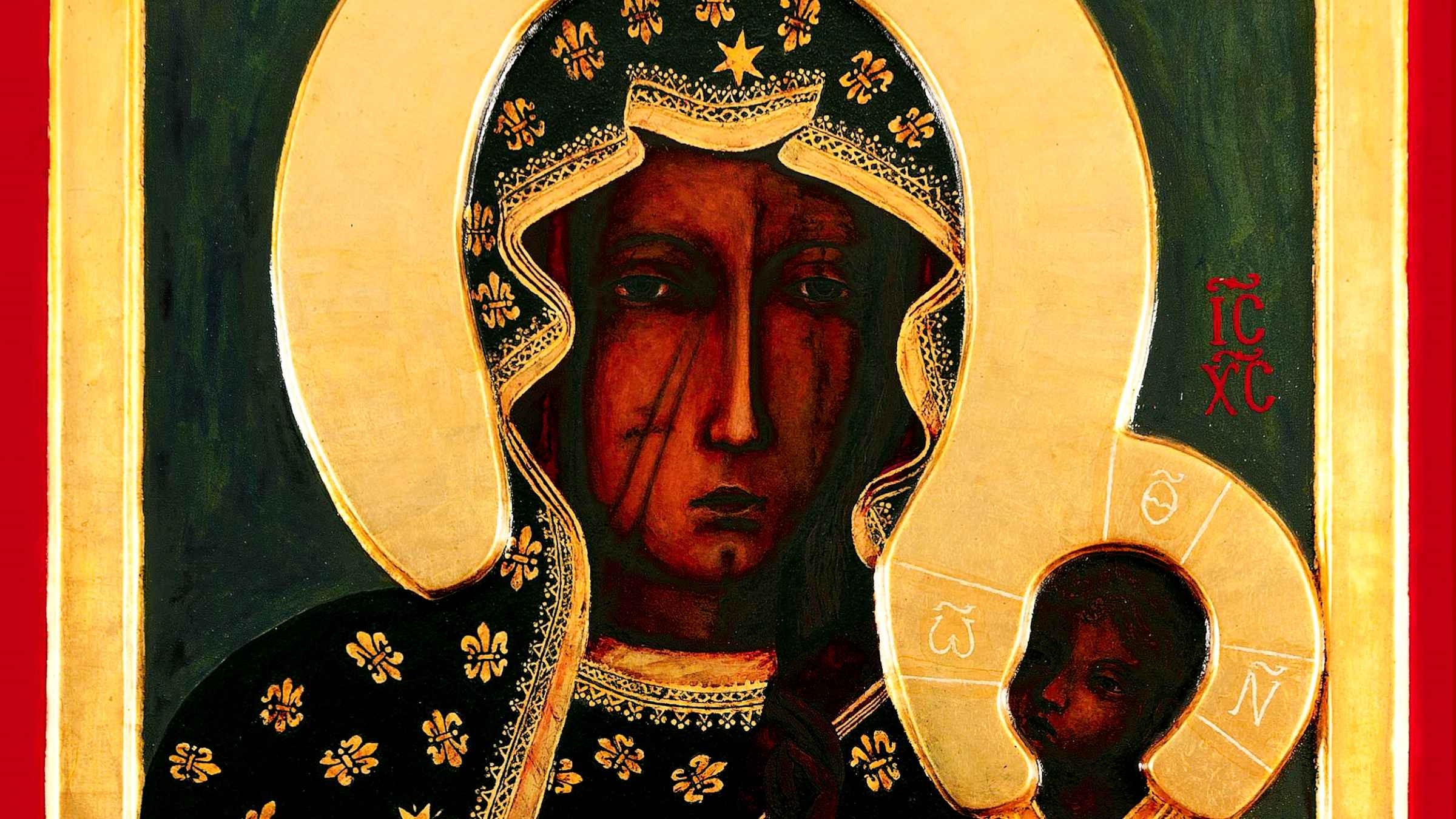 Black Madonna of Częstochowa
Black Madonna of Częstochowa


